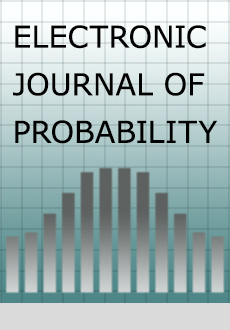Abstract
Abstract. Berestycki and Durrett used techniques from random graph theory to prove that the distance to the identity after iterating the random transposition shuffle undergoes a transition from Poisson to normal behavior. This paper establishes an analogous result for distance after iterates of riffle shuffles or iterates of riffle shuffles and cuts. The analysis uses different tools: Stein's method and generating functions. A useful technique which emerges is that of making a problem more tractable by adding extra symmetry, then using Stein's method to exploit the symmetry in the modified problem, and from this deducing information about the original problem.
Citation
Jason Fulman. "Stein's Method and Descents after Riffle Shuffles." Electron. J. Probab. 10 901 - 924, 2005. https://doi.org/10.1214/EJP.v10-268
Information





